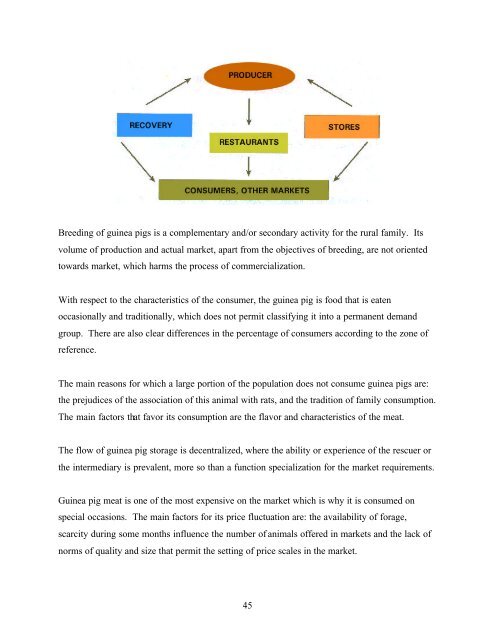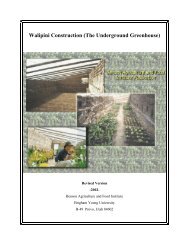GUINEA PIG MANAGEMENT MANUAL - Benson Institute
GUINEA PIG MANAGEMENT MANUAL - Benson Institute
GUINEA PIG MANAGEMENT MANUAL - Benson Institute
Create successful ePaper yourself
Turn your PDF publications into a flip-book with our unique Google optimized e-Paper software.
Breeding of guinea pigs is a complementary and/or secondary activity for the rural family. Its<br />
volume of production and actual market, apart from the objectives of breeding, are not oriented<br />
towards market, which harms the process of commercialization.<br />
With respect to the characteristics of the consumer, the guinea pig is food that is eaten<br />
occasionally and traditionally, which does not permit classifying it into a permanent demand<br />
group. There are also clear differences in the percentage of consumers according to the zone of<br />
reference.<br />
The main reasons for which a large portion of the population does not consume guinea pigs are:<br />
the prejudices of the association of this animal with rats, and the tradition of family consumption.<br />
The main factors that favor its consumption are the flavor and characteristics of the meat.<br />
The flow of guinea pig storage is decentralized, where the ability or experience of the rescuer or<br />
the intermediary is prevalent, more so than a function specialization for the market requirements.<br />
Guinea pig meat is one of the most expensive on the market which is why it is consumed on<br />
special occasions. The main factors for its price fluctuation are: the availability of forage,<br />
scarcity during some months influence the number of animals offered in markets and the lack of<br />
norms of quality and size that permit the setting of price scales in the market.<br />
45



